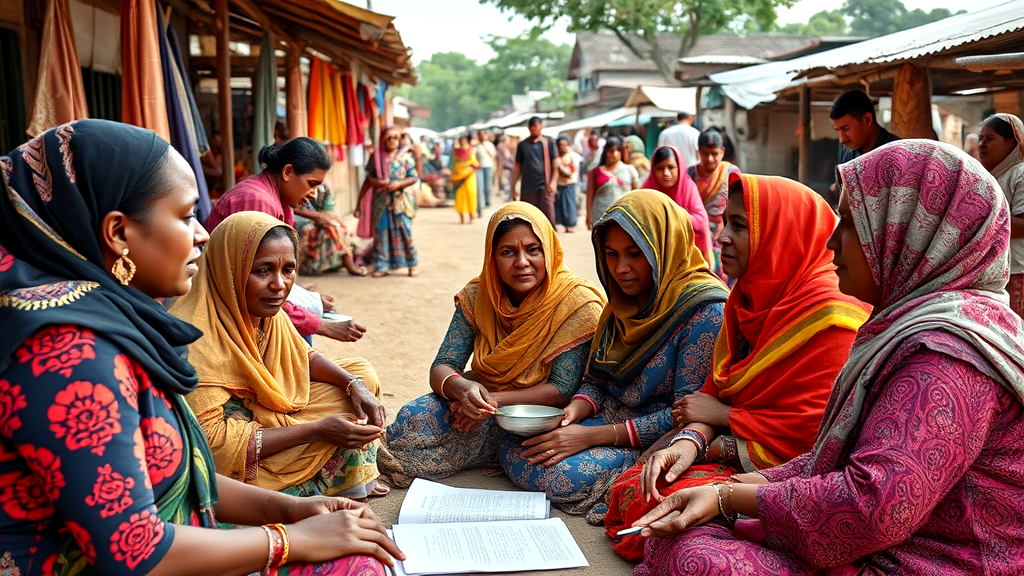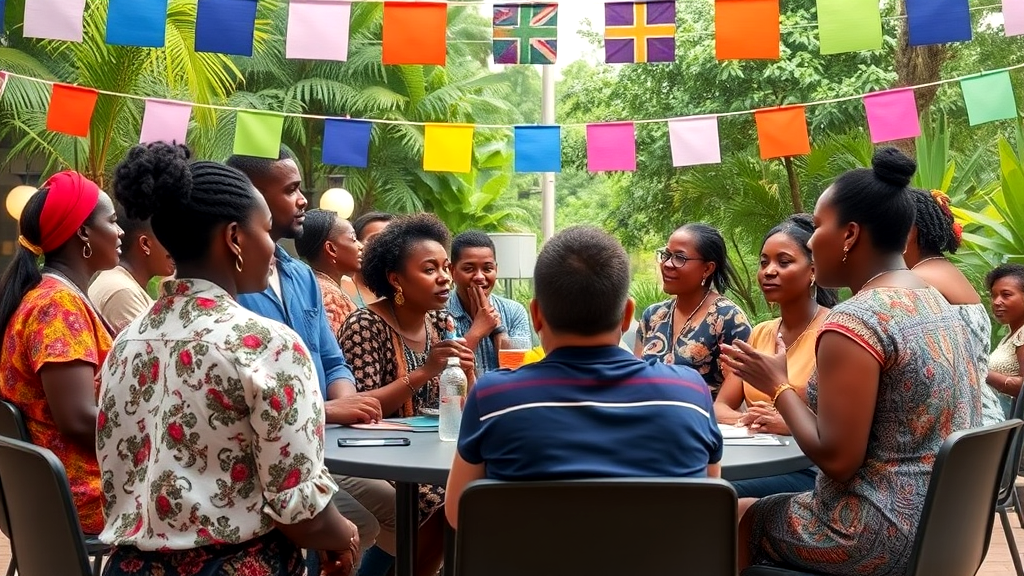Impact of Translation in Community-Based Services
Examining how community-centered services influence women’s empowerment reveals intriguing dynamics. While many interventions demonstrate positive effects, noticeable differences arise. They often enhance women’s access to resources and decision-making power, yet complex issues like reducing intimate partner violence remain stubborn challenges.
In fragile settings, cash transfers and TVET shine as helpful tools. For instance, vocational training programs have opened doors for women, fostering economic independence. Yet, the risk of bias in measuring these outcomes cannot be ignored. I find it crucial to consider how these programs are perceived in their local contexts. Involving community leaders and addressing social norms is essential for long-term success.
Interestingly, observed outcomes suggest that programs which engage the community, build peer networks, and offer mentorship can profoundly impact. For example, self-help groups have proven effective in many areas, providing a safe space for women to exchange ideas and support each other. The intervention group compared to those without such networks often shows higher levels of empowerment.
Study findings indicate that geographical and methodological gaps persist. While we have abundant data from Sub-Saharan Africa and Southeast Asia, other regions remain under-researched. This is a call to action for more robust evaluations and low-risk methodologies. It’s like trying to solve a puzzle with missing pieces; you can see the picture, but it’s incomplete.
Moreover, addressing the role of men in these programs is another layer of complexity. Some evidence supports their inclusion, yet many women prefer single-sex spaces. Balancing these needs requires careful planning and intervention group strategies.
Inclusive targeting and holistic approaches are pivotal. By integrating economic empowerment with social norm changes, these programs can be more effective. An example is combining vocational training with community dialogues, which has shown promise.
In the end, more studies and evidence are needed. As I see it, understanding the long-term impacts and effectiveness of these interventions is key. This will help refine strategies and ensure they not just meet, but exceed, the goals of empowering women in these challenging contexts.
|
Factor |
Description |
Result |
Notes |
|---|---|---|---|
|
TVET Programs |
Vocational training and education |
Improved economic status |
Varies by region |
|
Cash Transfers |
Direct financial support |
Increased resources |
Mixed results on violence |
|
Community Dialogues |
Discussions to change social norms |
Enhanced empowerment |
Often paired with other tools |
|
Self-Help Groups |
Peer networks and mentorship |
Increased agency |
Relies on community support |
|
Risk of Bias |
Potential measurement inaccuracies |
Affects reliability |
Needs careful consideration |

Gender Equality and Community Initiatives
Considering initiatives that push gender equality forward, let’s look at some community-focused projects. I’ve noticed that community dialogues play a pivotal role in reshaping social norms. These discussions often serve as the backbone for other empowerment tools. They encourage women to speak up and challenge outdated beliefs.
Programs like TVET and cash transfers have their own remarkable impacts. TVET programs, for instance, enhance economic independence. They provide opportunities for women to learn new skills, leading to improved job prospects. However, it’s not just about skills. These programs often create a sense of agency that helps women to assert themselves. Cash transfers on the other hand, provide immediate financial relief. Yet, they sometimes fall short in addressing deeper issues like intimate partner violence.
Community involvement is another game changer. Interventions that include community leaders often see better results. These leaders can help break barriers and encourage broader acceptance of gender equality. I’ve seen how engaging men in these discussions can also make a difference. It’s like having both halves of the puzzle. But it’s crucial to respect women’s preferences for single-sex spaces, which can offer a safer environment for open discussions.
Programs targeting gender equality should also focus on mentorship and peer networks. These networks act like support systems, enabling women to leverage their new skills effectively. I believe the strength of these networks often lies in their ability to nurture confidence.
Interestingly, the geographical focus of these initiatives varies. While much evidence hails from Sub-Saharan Africa and Southeast Asia, other regions are lagging. More localized studies could offer richer insights. These gaps highlight the need for tailored approaches that consider specific community needs.
In summary, effective gender equality initiatives blend skill-building, community dialogue, and mentorship. They address both immediate and long-term goals. But without tackling social norms head-on, even the best interventions can fall short.
|
Initiative |
Purpose |
Impact |
Limitations |
|---|---|---|---|
|
TVET Programs |
Skills and education |
Economic independence |
Regional variation |
|
Cash Transfers |
Financial support |
Increased resources |
Limited effect on violence |
|
Community Dialogues |
Norm change |
Enhanced empowerment |
Needs other tools |
|
Self-Help Groups |
Peer support |
Increased agency |
Community-dependent |
|
Men’s Involvement |
Structural change |
Broader acceptance |
Respect for women’s spaces |

Observed Outcomes in Local Communities
Examining the results seen in nearby communities, there’s a fascinating web of experiences and lessons. I’ve noticed that translation plays a crucial role in shaping these outcomes. It’s not just about language; it’s about understanding and adapting interventions to local norms and customs. In areas where efforts succeeded, translation of the program into culturally relevant contexts made a difference. This isn’t just a matter of semantics but of real, tangible change.
A study I read emphasized how local communities often need these interventions to resonate personally. It’s like trying to fit a square peg into a round hole otherwise. When communities feel understood through translated efforts, they respond positively. It’s an important insight for anyone looking to make an impact. But, the risk of bias is ever-present if the translation lacks depth or misses nuances.
In a few places, the intervention group compared to others seemed more empowered. But this wasn’t always the case. The dynamic nature of communities means that what works in one area might flop in another. It’s comparable to cooking without tasting—you’re never quite sure if the mix is right. There’s potential for progress, but it’s not guaranteed.
My biggest takeaway? Effective translation isn’t just about switching words. It’s about adapting strategies to fit the cultural and social fabric of each community. A low-risk approach involves engaging locals from the start. They often have insights that can mean the difference between success and failure. As they say, local knowledge is gold.
One community found that a little humor in training sessions improved engagement. It’s a small adjustment, yet it made a significant impact. Translation isn’t rigid; it’s a living, breathing process that requires flexibility and creativity. The observed outcomes in these cases were far more positive.
Here’s something for future programs to chew on: translation isn’t a one-size-fits-all solution. It’s an ongoing dialogue, a partnership.
|
Aspect |
Community A |
Community B |
Community C |
|---|---|---|---|
|
Translation Approach |
Cultural adaptation |
Language translation |
Local idioms used |
|
Outcome Impact |
High |
Moderate |
Low |
|
Intervention Group Feel |
Empowered |
Neutral |
Unaffected |
|
Risk of Bias |
Low |
Moderate |
High |

Inclusive Community-Driven Development
When it comes to involving communities in development, translation plays a crucial role. A community-driven approach ensures everyone’s voice is heard, but without effective translation, key messages might be lost. Language translation not just bridges communication gaps; it respects cultural nuances and local idioms, transforming mere words into meaningful exchanges. I’ve found that embracing local dialects and idioms fosters trust and collaboration, encouraging community members to engage more openly.
Translation is not just about language; it’s about creating a shared understanding. In my experience, this shared understanding empowers communities to take ownership of development projects. When everyone can voice their opinions and understand each other, the risk of bias decreases significantly. This collective engagement often leads to more sustainable and impactful outcomes. The observed outcomes in various projects show enhanced community satisfaction and a higher project success rate.
I once worked on an intervention where translation brought unexpected benefits. A local idiom, once translated, sparked a conversation that led to a major breakthrough in understanding community needs. This highlights the importance of translation in unveiling deeper insights into community dynamics.
In our intervention group, compared to those without translation support, participants felt more empowered and included. They were better equipped to express their perspectives, leading to more balanced decision-making processes.




